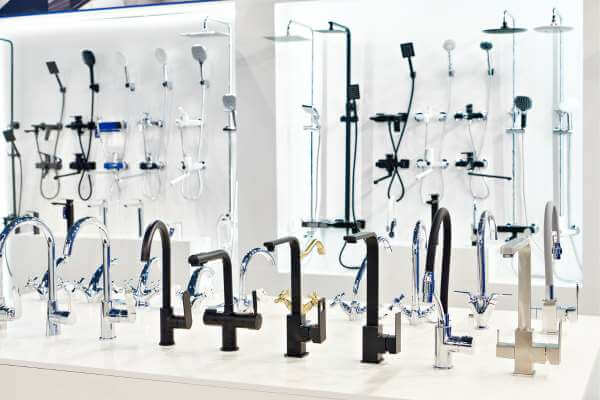Touchless kitchen faucets, also known as hands-free or motion-activated faucets, are a modern and convenient option for the kitchen. These types of faucets use advanced technology to automatically turn the water on and off, eliminating the need to manually turn a handle or knob. But how do touchless kitchen faucets work? In this article, we’ll explore the inner workings of touchless faucets and explain how they function.
How do touchless kitchen faucets work?
Touchless Kitchen Faucets Sensor
At the core of touchless faucets is a sensor that detects the presence of hands underneath the spout. This sensor is typically located near the base of the spout, and uses infrared or ultrasonic technology to detect motion. Infrared sensors work by emitting a beam of infrared light and measuring the reflection that bounces back, while ultrasonic sensors use high-frequency sound waves to detect motion.
When the sensor detects the presence of hands beneath the spout, it sends a signal to the faucet’s solenoid valve. The solenoid valve is a small electric valve that controls the flow of water into the faucet. When the solenoid valve receives the signal from the sensor, it opens, allowing water to flow through the faucet.
What is the duration of the water flow?
The duration of the water flow is typically controlled by a timer that is built into the faucet. The timer is set to turn the water off after a certain period of time, typically around 30 seconds. If a user wants to keep the water flow, they can wave their hand again to the sensor, this will reset the timer and keep the water flow.
Advantages of touchless faucets
One of the main advantages of touchless faucets is that they are designed to conserve water. Many touchless faucets are equipped with low-flow aerators, which mix air with the water to reduce the flow rate. This can help to conserve water and save money on water bills. Additionally, touchless faucets can help to reduce the spread of germs and bacteria by eliminating the need to touch the faucet handle to turn the water on and off.
What to consider before purchasing?
While touchless faucets are generally easy to install, there are a few things to consider before purchasing one. One important factor is the power source; touchless faucets typically require a power source to operate the solenoid valve and sensors. Some touchless faucets are powered by batteries, while others are hardwired to the electrical supply.
Another important factor is the location of the sensor. Some sensors are located near the base of the spout, while others are located on the side or top of the faucet. Make sure the sensor location is appropriate for your kitchen and your usage.
In addition, it’s important to choose a reputable brand and consider the warranty, customer service and technical support that comes with the faucet. Some touchless faucets come with a warranty of 5-7 years, which can give homeowners peace of mind.
To keep touchless faucets functioning properly, regular maintenance is required. This includes cleaning the sensors, replacing the batteries, and ensuring that the faucet is properly calibrated. It is also important to keep the faucet clean and free of debris to ensure proper operation of the sensors.
Check my article: The Touchless Kitchen Faucet Guide
Why does my touchless faucet turn on by itself?
There are a few reasons why your touchless faucet may turn on by itself:
- Calibration issues: The sensors on your touchless faucet may be improperly calibrated, causing them to turn the water on and off unexpectedly. This can be caused by a number of factors, including changes in temperature, humidity, or the environment.
- Sensor malfunction: The sensors on your touchless faucet may malfunction or become damaged, causing them to turn the water on and off unexpectedly. This can be caused by a number of factors, including water damage, dust, or debris.
- Battery failure: Many touchless faucets rely on batteries to power the sensors, and these batteries will need to be replaced periodically. If the batteries are low or failing, it can cause the faucet to turn on and off unexpectedly.
- False motion detection: Sometimes the faucet may sense something that is not there, like a flying bug.
- Leakage: If the solenoid valve is not working properly, it may cause a leakage and the water will flow through the faucet.
To fix the problem, you may need to recalibrate the sensors, replace the batteries, or clean the sensors and solenoid valve. If the problem persists, it may be best to a professional plumber take a look at it.
In conclusion
Touchless kitchen faucets are a convenient and modern option for the kitchen. How do touchless kitchen faucets work? They use advanced technology to automatically turn the water on and off. They are designed to conserve water and reduce the spread of germs and bacteria. While touchless faucets may have some reliability issues, they still offer convenience, design and hygiene benefits.


 Hi, my name is Debra Klein and I love modern kitchen designs! As a product reviewer, it’s my mission to help homeowners choose the right modern kitchen accessories for their homes. I want to give them the best solution possible so they can make the best decision for their needs. Thanks for reading!
Hi, my name is Debra Klein and I love modern kitchen designs! As a product reviewer, it’s my mission to help homeowners choose the right modern kitchen accessories for their homes. I want to give them the best solution possible so they can make the best decision for their needs. Thanks for reading!




